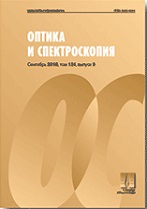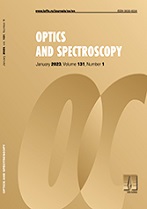|
Laser physics and laser optics
Development and experimental testing of a rotary direct wind lidar system based on Fabry–Perot interferometer technology
Hao Yangabc, Zhiyuan Fangabc, Ye Caoabc, Xu Dengabc, Chenbo Xieac, Peng Zhuangabc, Bangxin Wangac, Kunming Xingac
a Key Laboratory of Atmospheric Optics, Anhui Institute of Optics and Fine Mechanics, Chinese Academy of Sciences, Hefei, China
b Science Island Branch of Graduate School, University of Science and Technology of China, Hefei, China
c Advanced Laser Technology Laboratory of Anhui Province, Hefei, China
Abstract:
A 532-nm Rayleigh–Mie Doppler lidar system based on three-channel Fabry–Perot interferometer (FPI) technology was developed to measure wind speed from the bottom of the troposphere to the top of the stratosphere. An FPI transmittance calibration experiment and laser frequency stability experiments were carried out, resulting in the accuracy of the emitted laser frequency falling within 8 MHz. In addition, multiple sets of radial wind speed detection experiments were conducted during day and night, and the results of horizontal wind speed detection experiments were compared with those from balloon radiosonde. Results showed that, although the signal-to-noise ratio is not high, due to factors such as the size of the telescope aperture and the low optical coupling efficiency of the system, the overall performance of the verification system is good. When the spatiotemporal resolution of a single radial wind speed measurement is 2 min and 75 m, the system has the ability to detect the wind field in the height range of 16 km. In the height range of roughly 2 km to 12 km, the horizontal wind speed of the system and the balloon radiosonde were compared, revealing a direct correlation between the data that exceeded 0.8. Thus, the accuracy of the system.s wind speed measurement results was fully verified.
Keywords:
Doppler lidar; rotary direct wind measurement; Fabry–Perot interferometer; Rayleigh–Mie scattering.
Received: 29.12.2020
Revised: 24.02.2021
Citation:
Hao Yang, Zhiyuan Fang, Ye Cao, Xu Deng, Chenbo Xie, Peng Zhuang, Bangxin Wang, Kunming Xing, “Development and experimental testing of a rotary direct wind lidar system based on Fabry–Perot interferometer technology”, Optics and Spectroscopy, 129:6 (2021), 765
Linking options:
https://www.mathnet.ru/eng/os1111 https://www.mathnet.ru/eng/os/v129/i6/p765
|


| Statistics & downloads: |
| Abstract page: | 47 | | Full-text PDF : | 15 |
|





 Contact us:
Contact us: Terms of Use
Terms of Use
 Registration to the website
Registration to the website Logotypes
Logotypes








 Citation in format
Citation in format 